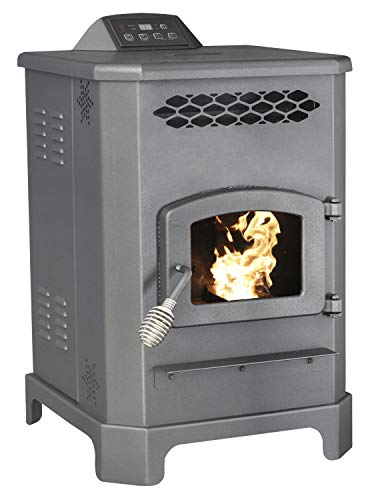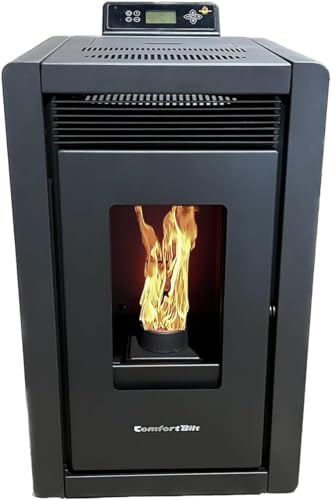You'll Never Be Able To Figure Out This Pellet Stove Furnace's Tricks
페이지 정보

본문
 pellet stoves on sale stove furnace (cncfa.com)
pellet stoves on sale stove furnace (cncfa.com)Pellet stoves are offered as freestanding units or fireplace inserts that can give your home the appearance of an authentic fireplace that burns wood. They can be purchased as freestanding units or fireplace inserts that give your home the look of traditional wood-burning fireplaces.
The auger moves the pellets out of the hopper to the combustion chamber in the combustion chamber, where they are burned and produce heat. Sensors monitor the flame and can alter the speed of operation in order to maintain a desired temperature of the room.
1. Energy Efficiency
Pellet stoves are a renewable, non-toxic fuel made from compressed sawdust as well as other materials. They are usually disposed of in landfills, but can also be used to create a clean and efficient source of heat. They aid homeowners in reducing their energy use and thus greenhouse gas emissions. Many best pellet stove stove owners report recouping their initial investment within just a few years, thanks to lower heating costs.
Pellets are more dense and compressed than natural wood, making them more efficient for burning. They also produce less creosote than traditional wood-burning fires. They are also packed in plastic bags that are sealed to keep out moisture and require less frequent cleaning.
Pellet stoves, like other heating systems, must be properly sized and vented. A skilled technician can assess your space and venting requirements to ensure the most efficient results.
In the process of installation, the hearth is constructed to fit the space and the vent is installed through a hole that has been cut in the siding of your home. The vent can be run through a sidewall or a roof depending on your preference and the local laws.
After the vent and hearth are completed and the stove is ready to be plugged in. Certain manufacturers provide remote controls that make starting and maintaining the fire easy and others include sensors that monitor airflow, combustion flue temperature, pressure. When the system detects it requires more pellets or less, it signals to the auger that it needs to accelerate or slow it down according to the need.
All stoves have a hopper for storage that holds from 35 to 130 pounds of pellets until required. Hopper capacities determine how often the stove will need to be refilled with more hoppers, allowing longer intervals between refills. A grille draws air from the room, then passes it over the heat exchanger, and then blows heated air into the living space through convection. A grate or auger distributes the pellets, while a pan underneath will collect any unburnt ones along with combustion residue.
While pellet stoves are more efficient than wood-burning models they're not as efficient as natural gas furnaces or electric heaters. Electric components that drive motorized components of stoves require electricity. This could be a problem in a power outage, though backup systems like generators and batteries are readily available.
2. Low Maintenance
Pellet stoves can be extremely efficient, however they require some attention to function properly. Cleaning regularly your stove's exhaust vents and the stove will stop the accumulation of harmful creosote, which can cause an explosion, fire, or damage to your stove or house.
A pellet stove uses compressed natural particles (such as kernels, nutshells of corn or small pieces of scrapwood) made from wood or other materials. An electric auger will feed the pellets from a fuel hopper into the burner and into the combustion chamber. The thermostat you set regulates the speed of pellets being fed to the burner. The fire can continue to roar or decreased or even extinguished depending on the temperature you set. The ash will be collected in an empty ash tray beneath the burner. It can be easily removed and disposed.
Pellets are created from the waste products of lumber processing which would otherwise be thrown away. They are renewable resources and release much less dust into the air than traditional wood-burning stoves, making them a cleaner burning heat source. The amount of carbon monoxide, carcinogens and other harmful chemicals produced by pellet stoves is much lower than those with modern wood stoves that have been certified by the EPA.
Because of the low emissions the stoves do not need to be vented through a chimney like traditional wood stoves but they must be properly vented through a wall or other external structure. pellet stoves for sale stoves have flue ports at the rear or top of the appliance. They are connected to a ventpipe that extends out from the house.
One disadvantage of pellet stoves for rvs stoves is that you have to purchase or store enough pellets to last the winter season. On average, owners of pellet stoves use three tons of pellets during the course of winter, at a cost of $200 for each ton. These costs add up over the years however, it's cheaper than buying and transporting firewood for an old-fashioned wood-burning fireplace or stove. You should purchase enough pellets to ensure your stove can run through the winter's coldest months. Also, you'll must have a space to keep the pellets (preferably dry and cool).
3. Reduced Carbon Footprint
Pellet stoves generate heat using renewable biomass fuels, reducing the need for finite fossil fuels. This reduces carbon footprints and diversifies the sources of energy for homes.
Even the latest wood stoves that are EPA certified emit significantly less than pellet stoves. The emissions of pellet stoves are also less than those from gas furnaces. Pellets are made of compressed sawdust, bark and other wood wastes. They may also contain various other materials like soybeans, corn as well as nutshells, cherries pits, and agricultural waste. When burned, they emit less particulates (leading to respiratory problems and allergies) carcinogens and carbon monoxide as well as the nitrous oxides.
The feed system is the major difference between a pellet stove and a wood stove. Pellet stoves have hoppers to store the pellets. When the thermostat or sensors suggest that the room requires heating, the auger is turned and the pellets are pumped into the combustion chamber where they are burned and generate heat. The air that is released from the combustion chamber flows through a heat exchanger which transfers the heat to a blower and out into the room. This process produces very little emissions, and creosote does not created.
When the hopper is empty, a cyclone action removes the ash and deposits it in an ash jar. The stove is fitted with an air-flow system that circulates the warm, fresh air into the room. Most pellet stoves are made to operate with minimal maintenance and feature a large viewing space for you and your family to take in the flames.
The most significant factor affecting emissions from pellet stoves is the quality of the pellets. The poor quality pellets emit more emissions. When choosing your pellets, ensure that they meet certain standards and do not contain other ingredients, such as petroleum-based or urea-based substances. Also, look for a manufacturer that offers a guarantee and will repair or replace any part in the event of a problem. If you want to take an even greener approach Some states permit homeowners to claim a tax credit for installing pellet stoves. This is a great opportunity to help offset the initial cost of this type of stove and make installation more affordable.
4. Reduced Noise
Pellet stoves produce less smoke and exhaust in comparison to wood-burning fireplaces. A fan is used to spread heat more evenly across the room. This is a major reason why pellet stoves require less maintenance than wood stoves. While wood stoves require regular cleaning of particulates and chemicals to prevent their deterioration stoves can be cleaned with a metal vacuum cleaner.
Many manufacturers have made a conscious effort to create stoves that will be simple to install and operate as well as maintain. The stoves come in various styles that are designed to match the design of your home. Some models come with an app for WIFI, a remote control, and programmable thermostat.
The majority of pellet stoves come with a large fuel hopper which can hold 35 to 130 pounds of pellets. The pellets are then fed into the combustion chamber via an auger. The speed at which pellets are delivered to the burner determines how hot the fire is and the heat output. The hopper can either be filled with hardwood pellets, made from wood with a dense structure such as oak and hickory or softwood pellets. Many stoves can also burn alternative biomass pellets, such as those made from switchgrass or corn which are environmentally friendly alternatives.
Because pellet stoves use a clean fuel, they produce far less smoke than traditional wood-burning fireplaces and require less maintenance. They don't require chimneys and are an ideal choice for retrofits or new construction.
 In contrast to wood stoves, which need to be kept regularly free of creosote as well as other chemicals, pellet stoves only need to be periodically inspected to ensure proper operation and maintenance. This may include regular cleaning and inspection of the ash or "clinker" as well as the fans and motors, depending on the model. The dealer of your appliance can explain the proper procedures for the specific model and brand. He can also assist you to find the correct fuel for your stove, and give details on storage and safety.
In contrast to wood stoves, which need to be kept regularly free of creosote as well as other chemicals, pellet stoves only need to be periodically inspected to ensure proper operation and maintenance. This may include regular cleaning and inspection of the ash or "clinker" as well as the fans and motors, depending on the model. The dealer of your appliance can explain the proper procedures for the specific model and brand. He can also assist you to find the correct fuel for your stove, and give details on storage and safety.- 이전글You'll Never Guess This Car Keys Repair Near Me's Secrets 24.11.28
- 다음글The 9 Things Your Parents Taught You About Nissan Qashqai Replacement Key 24.11.28
댓글목록
등록된 댓글이 없습니다.


